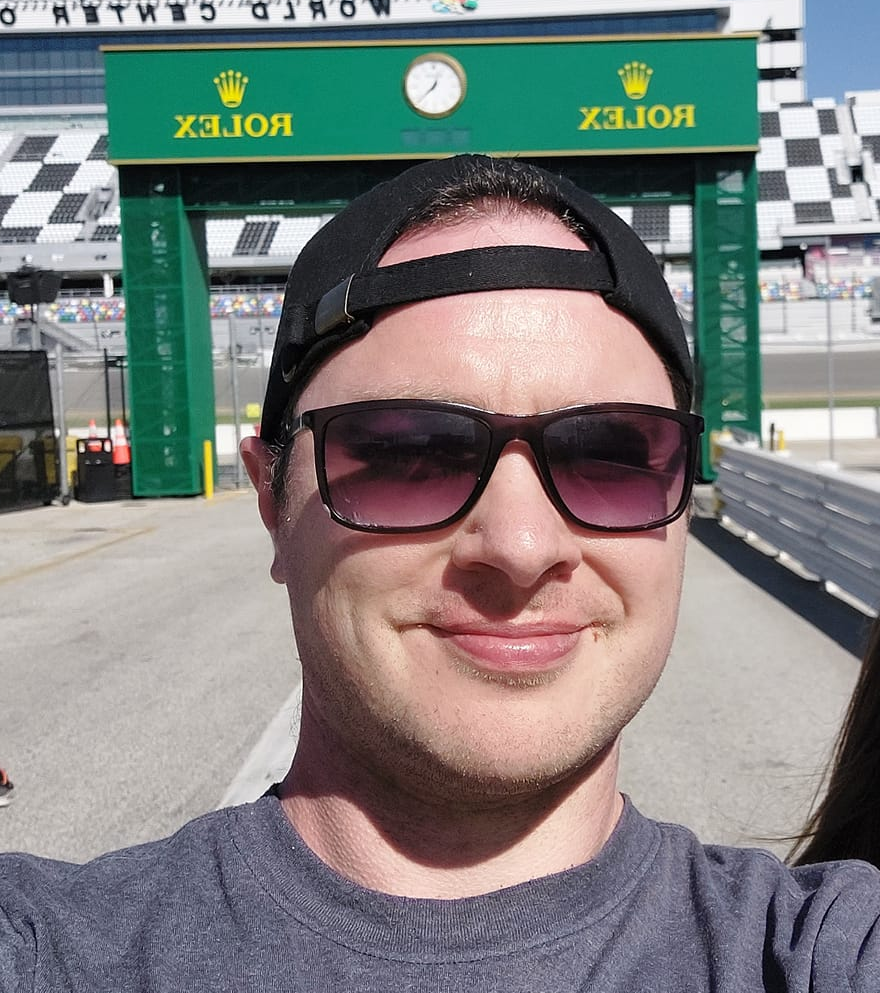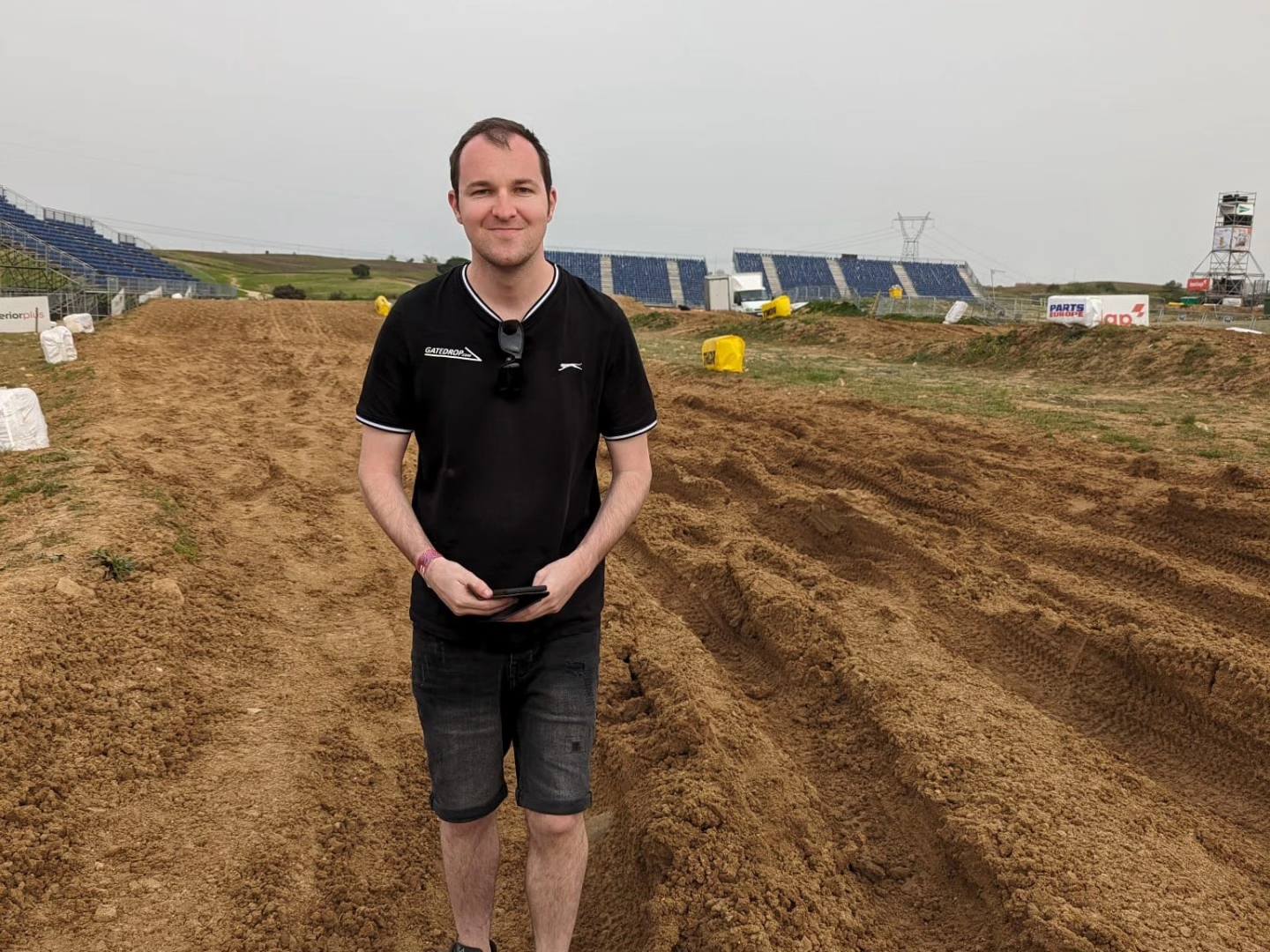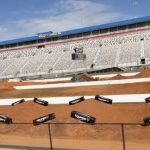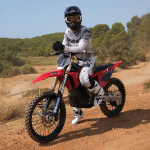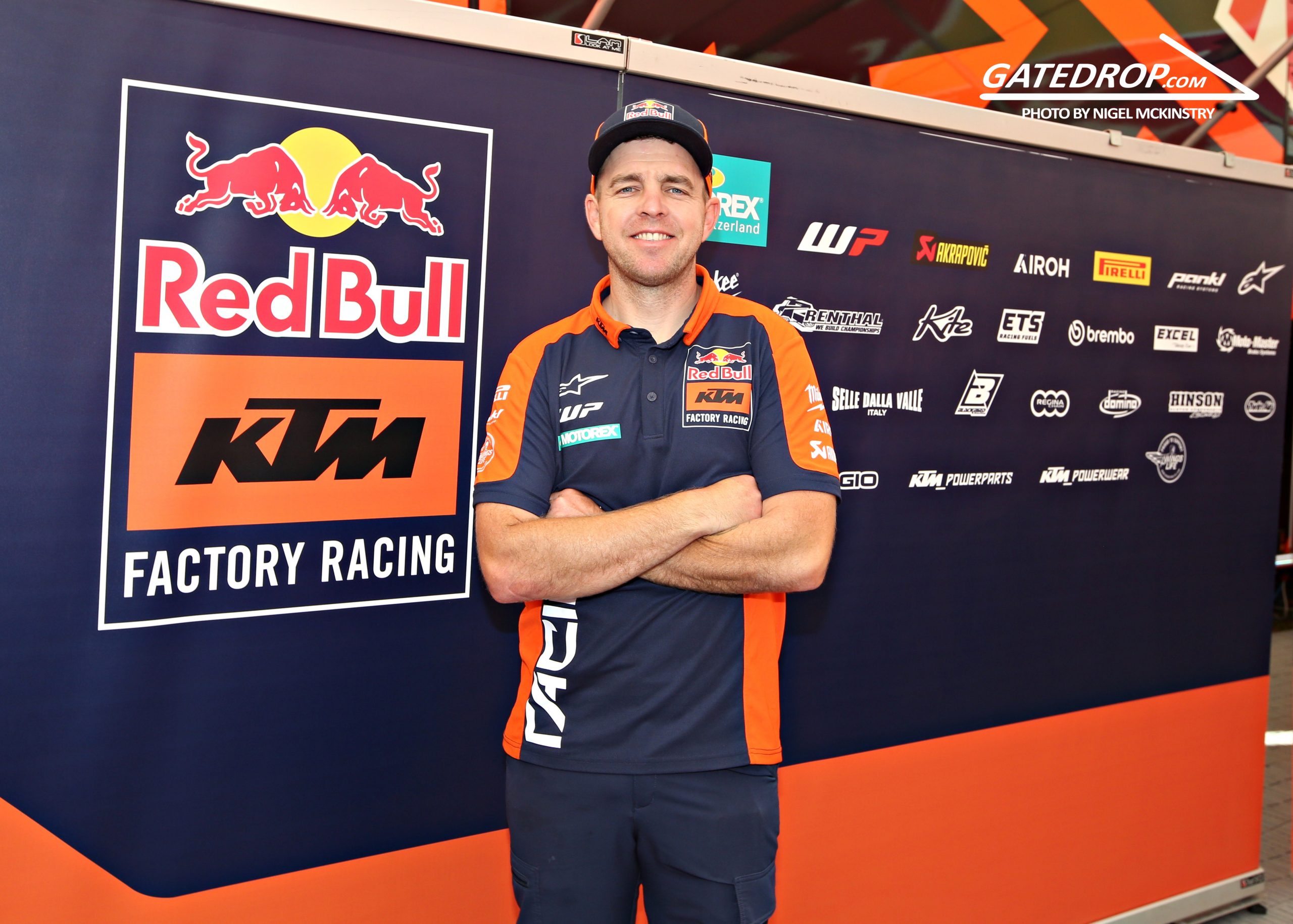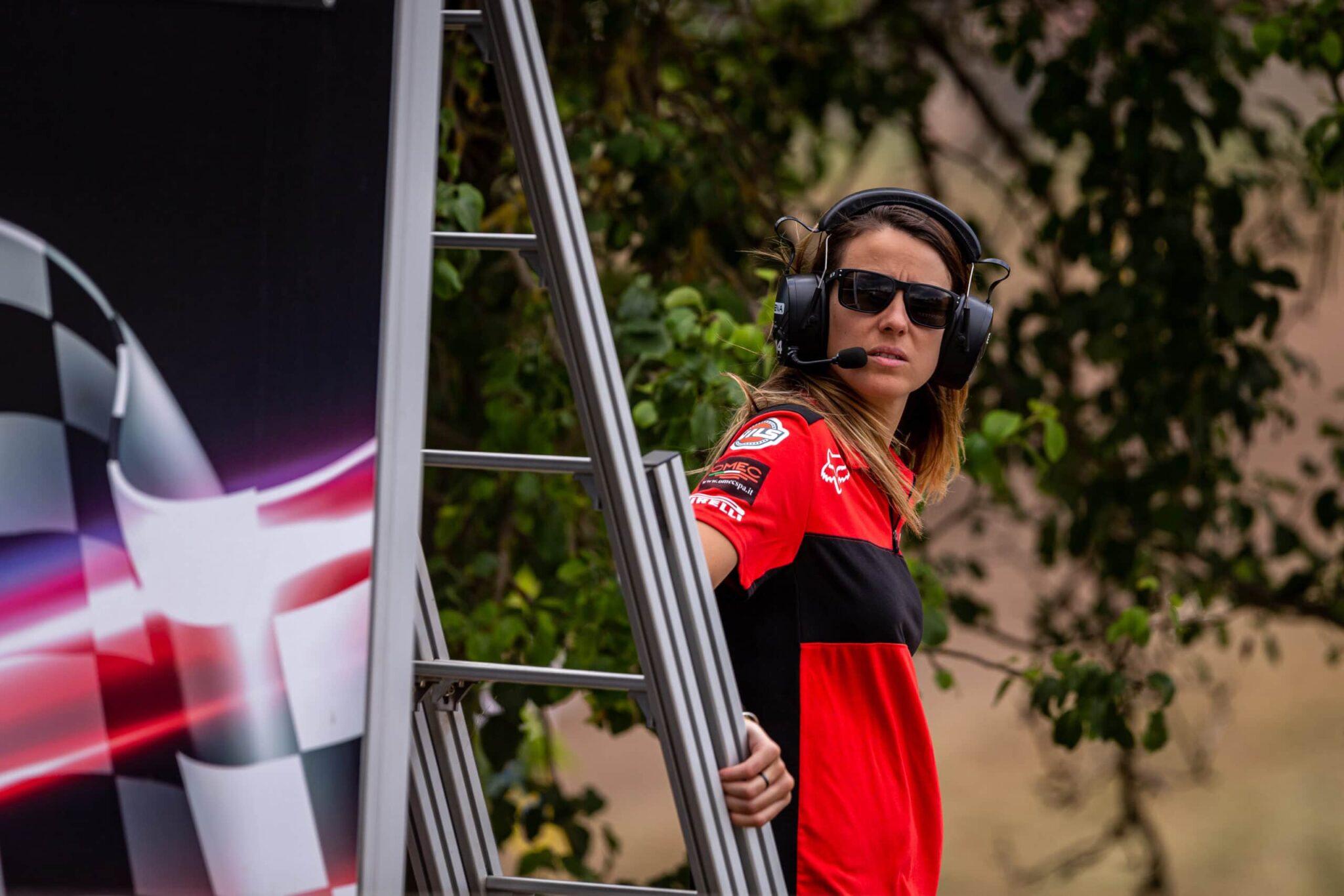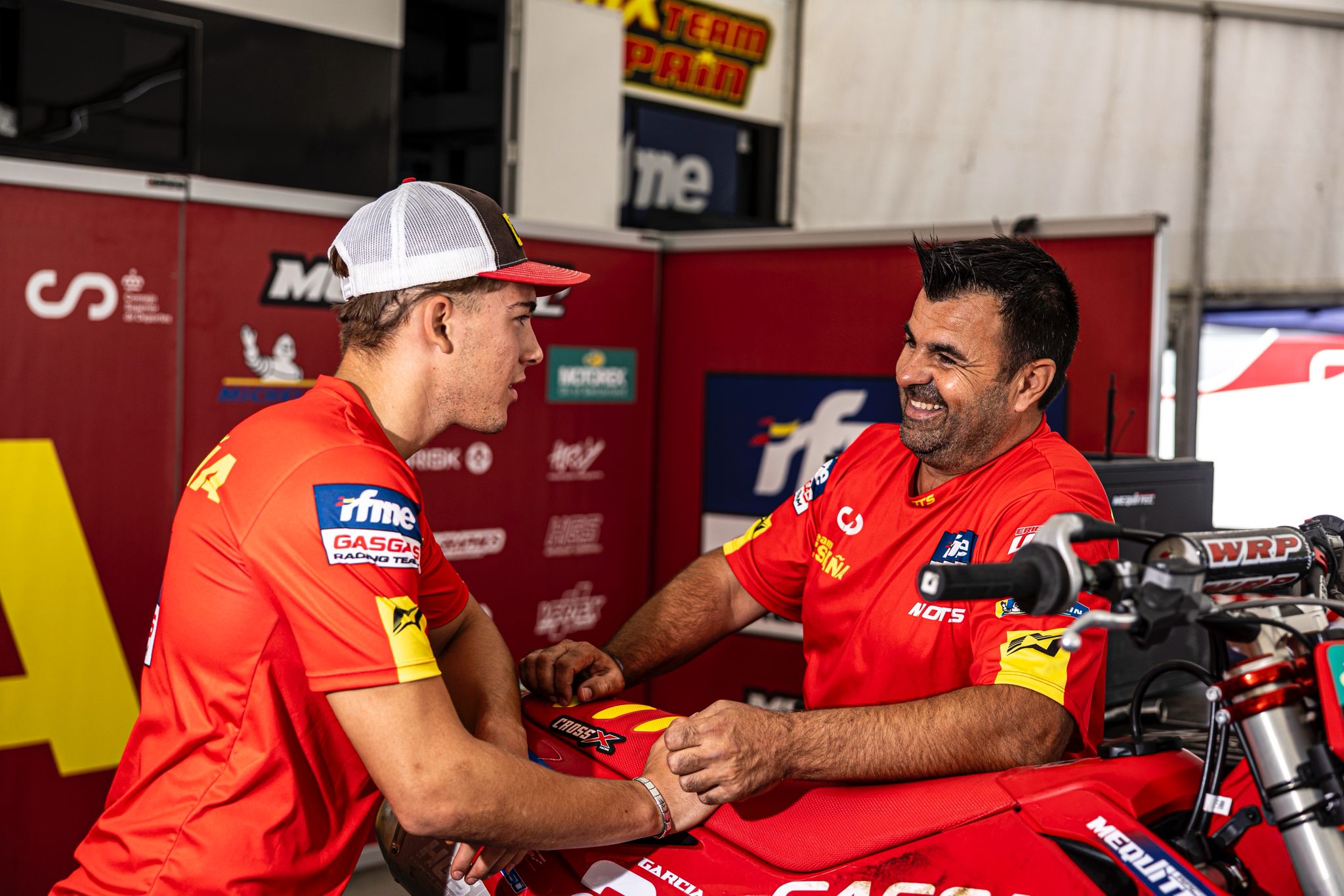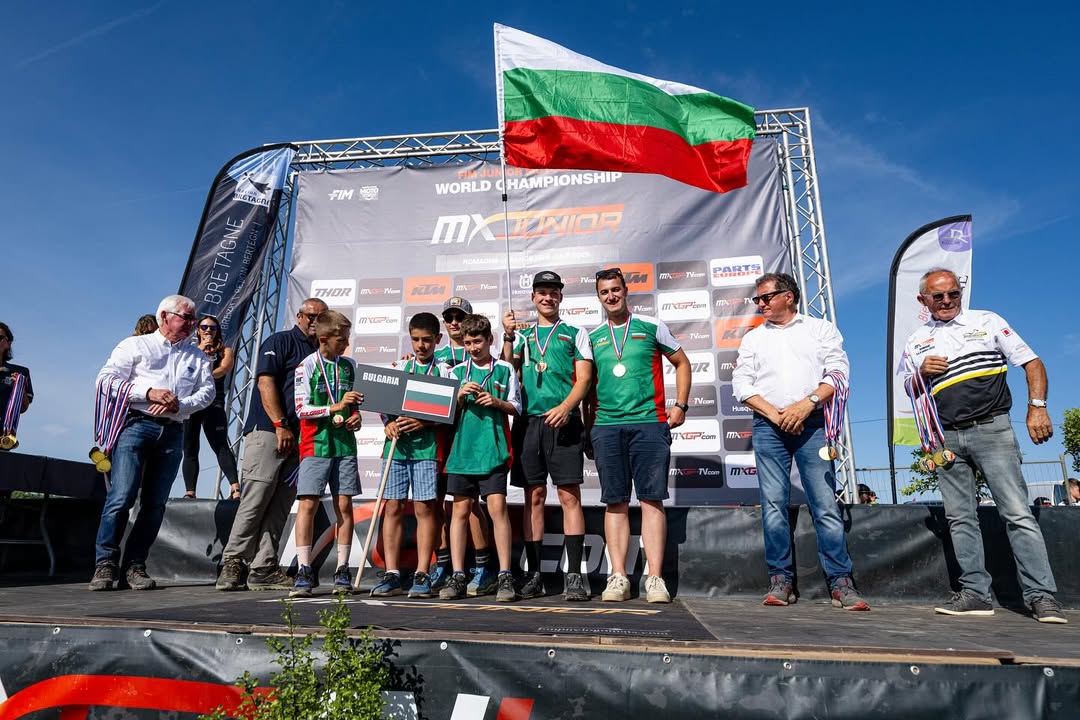From growing up in Australia surrounded by the smell of race fuel and the roar of engines, to working with some of the sport’s biggest names across the AMA, Enduro GP and MXGP paddocks, Scott Lillis has lived and breathed two wheels his entire life. What started as a childhood dream of racing soon evolved into a passion for the technical side of the sport, eventually propelling him onto the world stage as a highly respected mechanic. In this in-depth interview, Lillis shares the story of his journey, the challenges of working at the highest level, what it really takes to succeed behind the scenes, and the lessons learned from working with elite riders all around the globe.
GateDrop: Can you take us back to how you first got involved in the sport — what inspired you to become a mechanic?
Lillis: I think it started from my father who raced… He raced in Australia and in England. He was a speedway rider, speedway solos, sidecars and stuff like that. To be honest, he pretty much raced everything. Enduro, motocross, dirt track, long course. So, when I grew up, it was like motorsport and anything with two wheels we were into.
I didn’t really have a choice. I just wanted to do what dad did and dad rode bikes. Honestly, I think it’s from that time… my first memories ever of being at the track or at the speedway with my dad, his friends and stuff like that. It’s kind of all I’ve ever known.
GateDrop: Did you ride at the start?
Lillis: That was the original dream. I think like every kid growing up, they want to be a motocross/supercross superstar. I grew up in Australia in the early days, there was no supercross on TV. We could only get it through the VHS. But we had Eurosport, so we could watch the GP’s. I mean, that was all I ever wanted to do so growing up, I raced a lot when I was young as well as other sports.
But motocross was always the goal for me. I grew up and I raced nationals in Australia. I raced at a pretty decent level, something that I’m proud of. I think at the end of the day, I was always more into the tuning of the bikes and working on the bikes. My dad and I worked many nights together in the garage… That’s some of my core memories, you know, of working in the garage on bikes with my dad and getting ready for races and driving across the country and things like that.
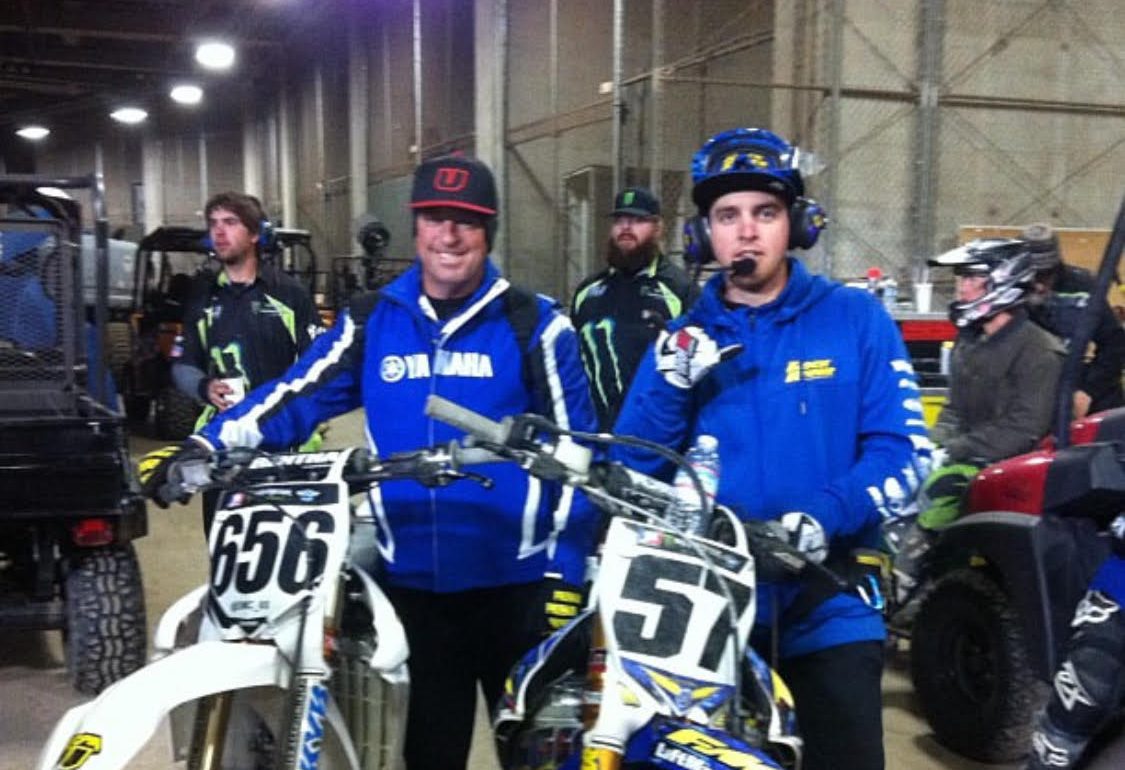
GateDrop: You’ve worked with some top riders across different continents. How did your career evolve from Australia to the AMA and eventually to the GP paddock?
Lillis: I started schooling in a regular bike shop in Australia. I got a couple of weekends to sort of help out with the small teams and stuff. I worked at a suspension sponsor at the time who had a position for me at Shock Treatment in Australia. I started to specialize in suspension and learning that side of the sport. And that honestly got my foot in the door in America.
I was working with a race tech centre in Australia, and I emailed Paul Thede from America, the owner of race tech, said, hey, is there any positions over there? I’m ready to come over. He said, yeah maybe. And so, for me, maybe is good enough. I packed up, sold everything and headed to America.
GateDrop: What are some of the biggest differences you’ve noticed between working in the AMA paddock and the MXGP series? Supercross is probably very different in America but Motocross over there a lot of the tracks are similar whereas in MXGP one week you are in Loket and the next in Lommel, two different worlds…
Lillis: That’s the biggest difference, to be honest. But even now, we are not too far. These days, man, honestly, the bikes work pretty good everywhere and it’s the same in America. Everybody uses the same rear tire, it’s the same as it is over here. You either use the soft tire or the scoop. Suspension-wise, the bikes are so similar. Obviously, a little bit different with the KTM group over here, we’re usually a year in front in terms of chassis and stuff like that. But all in all, especially on the KTM side of things in America and here, it’s very, very similar. In terms of our bikes, they don’t change too drastically over here from the start of the year to the end of the year, other than maybe a setting here or there.
But in terms of track particulars, it’s pretty close across the board. It’s honestly very similar to America. I mean, you have a guy like Zach Osborne who pretty much ran the same gearing, the same setup all year, Supercross and Outdoors and the same with the 250. The gearing and stuff like that can change one or two teeth here and there, but it’s pretty similar all year round, to be fair.
GateDrop: The first pro rider that you worked for I believe was Ben Lamay, what was that like? It was the first time you’d be in a position of working with a top rider and at that time in the AMA paddock. How did you prepare etc for it – where you nervous?
Lillis: Honestly, it happened so fast. Ben was a Racetech rider, and I got there in December. The day after Christmas, Boxing Day, in December… then by January 4th, I think it was on the Tuesday or Wednesday before Anaheim 1… Ben asked Rob, the manager at Racetech: hey, any of the boys want to help me out for the weekend? I was like, yep, put me in. I literally met Ben the day of the race.
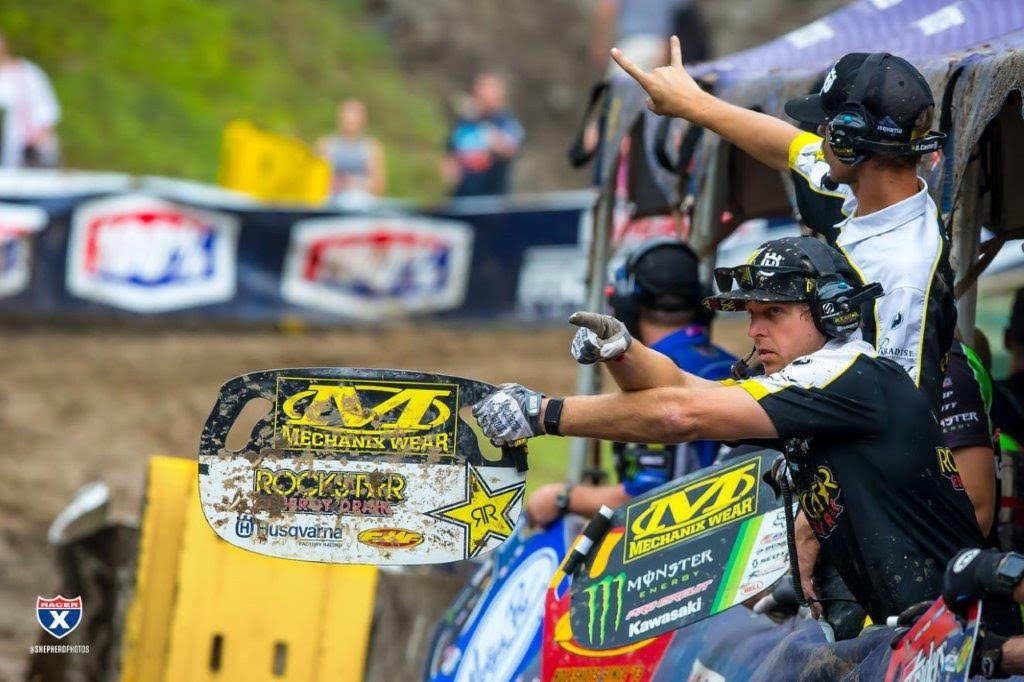
GateDrop: Wow, and then you ended up spending the season with him?
Lillis: Yeah. He was like, hey, this is good. We should continue doing this, I was like yeah. So honestly, for the first six months, I was still doing the testing and stuff like that with Racetech. We were doing hill climbing, supermoto, motocross, supercross, freestyle. We were doing so much but that was a really cool thing. I think in the first or three months in America. I probably learnt more than probably the last six or seven years working in the industry.
It was like trial by fire, I just jumped into the deep end and got stuck in. It was really cool. Halfway through that year is when I was like, alright, I want to be at the races all the time and that’s what I want to do. I want to do everything. I want to do chassis, engine, suspension. I just don’t want to specialize so halfway through the year, I was like, alright Ben, me and you, full time. So that ended up being really cool.
GateDrop: To me that is pretty crazy the fact that you met Ben the day of the race in A1, typically you spend a full off-season with a rider, so what was that like?
Lillis: Honestly, just the way that first year was with Ben who was still so young. I think he was around 21 but he was really big, he was 90 kilos and maybe 185, 190 centimeters so he’s quite a tall and big guy. He was way too big for the 250cc so he pretty much, I don’t think he really even raced a 250cc other than in the amateurs. He pretty much went straight into the deep end with MX1 and the 450s. So for him, he was learning. He didn’t really know what the goal was.
I was completely green. It was fun because we were both young and we’re just winging it and living week to week. Nobody had any money. We were sleeping on couches and I was sleeping on Ben’s couch and on the floor of his hotel room to save money and stuff like that while driving to the races. It was wild but it was fun. I really enjoyed my time working with Ben, especially that first year. It was crazy.
GateDrop: You’ve worked with a range of riders — from experienced pros like Justin Brayton and Brett Metcalfe to rising talents like Janis Reisulis. How do you adapt your approach depending on the rider’s level and personality?
Lillis: I think obviously every rider is different and every rider has their own sort of little quirks and stuff. But, I mean, when you start with a rider, especially an experienced rider, they sort of already know the feeling that they want. So for that, it’s a little easier because they already know the direction they want to go.
But sometimes trying to find which direction that is, I think that’s a big issue. Especially, I think you’re seeing that with Prado now and a lot of guys, when you change everything, it’s like, OK, I know a feeling I want. It’s just, I don’t know how to get there. So, with the young guy, they don’t really know what’s good, which is also difficult because it’s like, they can ride anything fast. Especially, a rider like Reisulis and Rossi… they don’t know what the best setting is, so they say it feels good and just adapt. So, there’s a lot of adaptation to a certain point. We watch the bike, we watch them, how they ride, their style. A rider like Marc is so technically gifted, he’s so sound. His technical ability on the bike and his speed is so raw and so fast that he’s so precise with everything he does. He can afford to run a lot of a softer setup, which is a setting like what Marc would ride is almost, other than his weight, it’s almost softer than someone like Andrea, which is almost 15 to 20 kilos lighter. It’s because they’re so different in terms of their riding styles.
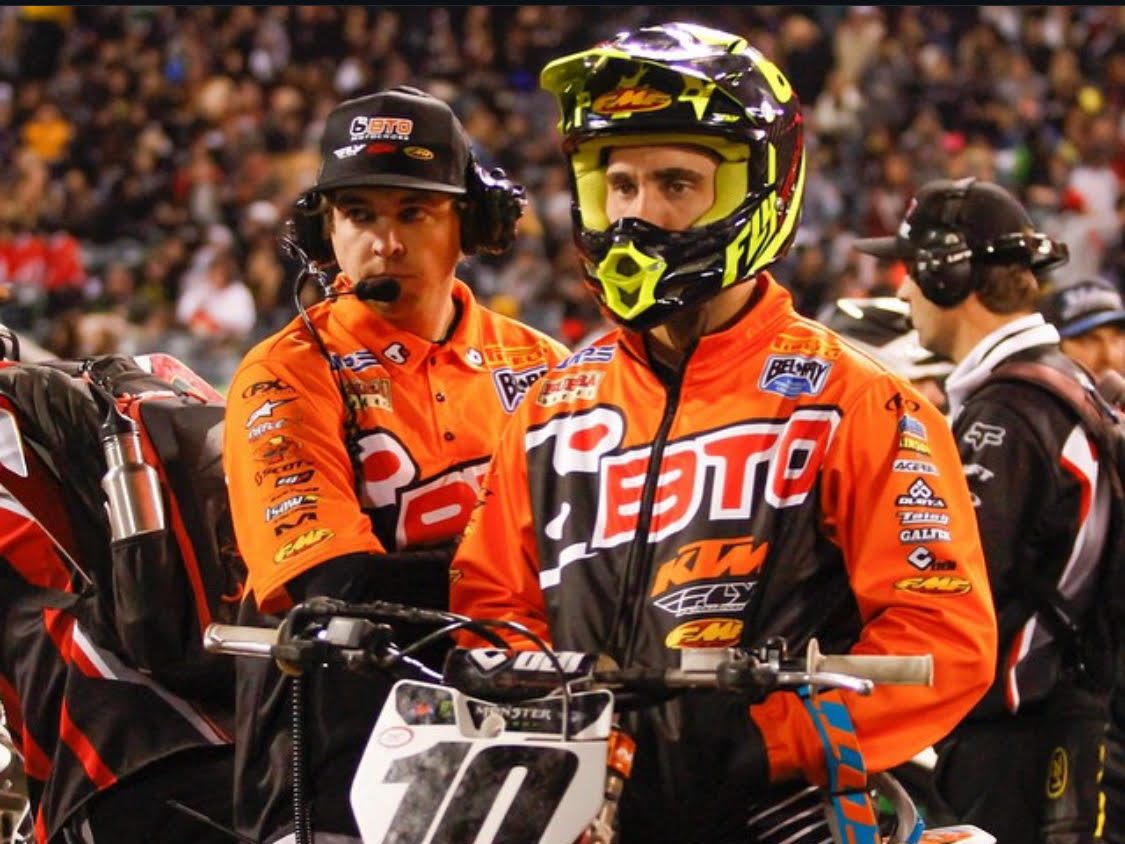
GateDrop: Is there one rider that stands out as the most particular or demanding when it comes to bike setup or feedback?
Lillis: I mean Justin Brayton was. That was a difficult, the first year with him in 2015, that was because he was coming off a quite successful time at JGR Yamaha. He had a really good feeling, especially with that 2014 model Yamaha. I think Justin is on record saying that was maybe one of his favourite forks he’s ever had in his career was that 2014 Yamaha. So, to get a rider to come that was really comfortable, to come to a steel chassis, completely different suspension, completely different team setup, everything. It was really difficult. Like I was saying before, to find that feeling that he was searching for, but we just really didn’t know how to get the bike to work to get to that feeling. That was probably the one that sticks out the most.
Andrew Short was amazing. Just as the second guy on the team. Just watching him and how he tested and how sensitive he was in a good way. He could tell crazy things. He could feel the difference in axle clamp torques and chassis torques and stuff. He could really feel the difference with that. I was like, wow, that’s actually pretty crazy. He was very, very good with his feedback. I think that was probably why he had such a long career in the sport, because of his ability to test and his ability to give feedback. Whether the feedback was positive or negative, he always had a way of explaining it: this is how that feels, this is where it feels good and this is where it needs to improve. A lot of riders like that are quite good. But then those are usually riders that you would call a thinking rider. I think Andrew would agree with me, that he was constantly maybe not just focused on racing. He was constantly focused on the bike and Brett Metcalfe was also crazy like that. Brett was very, very sensitive. Again, he was looking for a feeling in his hands and to try to find that feeling… We searched a lot, and we changed a lot of shocks, torques and swing arm lengths and everything. I think it’s difficult, but it’s also fun at the same time.
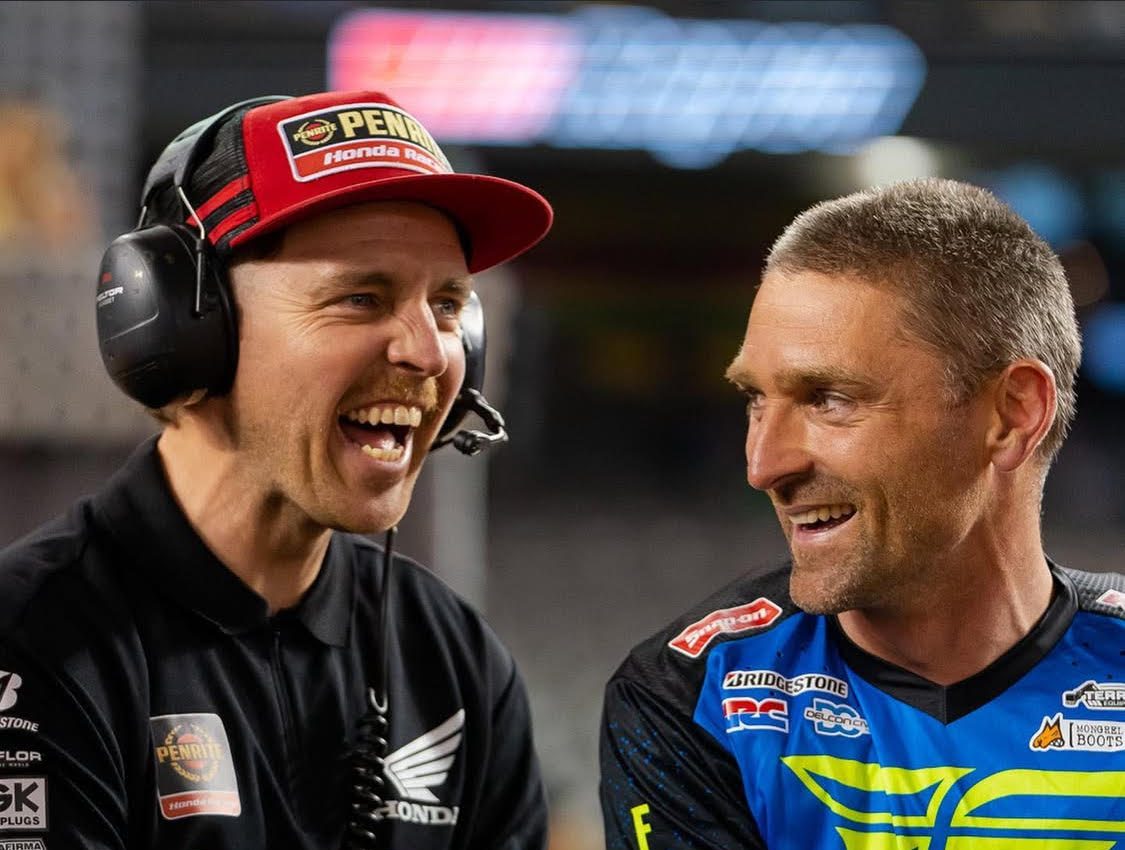
GateDrop: Out of the riders you’ve worked with who has surprised you the most with their talent or work ethic?
Lillis: Janis (Reisulis) did but only because I really didn’t know much about him. I didn’t really pay too much attention when he raced the 125cc. Obviously, he was very good in the EMX125 class but then I didn’t really have much experience with him. I wasn’t too invested in the 125cc class at the time. I mean, the first couple of days, I think me and the manager, Pela Renet when we were watching him. We’re like, dude, you’ve just got to keep him healthy… He’s going to win everything (laughs).
GateDrop: I’ve got to ask you about Justin Brayton, he kind of reminds me of an American version of Antonio Cairoli in terms of the fact he kept on racing – he couldn’t get enough of it before he retired and he was like a fine wine too. What was he like to work with?
Lillis: It was cool because that was my first rider that was a legitimate podium guy. You know, it’s like he was just coming in. He had a few podiums the year before, he almost won Phoenix. He got passed, I think, on the last lap or second-to-last lap by Villopoto that year. It was the first time for me that I had a legitimate top five/podium chance so that was really exciting. But then that comes with a lot of pressure, especially that first year on the KTM.
The team, which was BTO KTM, I don’t think they were really set… Well, I can tell you for real. We weren’t set up for a rider of that capability who was that particular. You can get guys that are really particular, but they’re also very easy going. Justin was still very, very professional and very like, no, no, I know what I want, and this is what I want, and this is how we need to get it. But then sometimes it’s like you’re very limited with the sponsors you have, the brands that you have to use and everything else.
It was an awesome year. It was a lot of fun. We had a great relationship. We raced mountain bikes together. It was a really, really fun year. But then on the bike, injuries, and then just not being very comfortable, it was really quite difficult. So, I think that was probably, if I look back on my career, that’s probably the hardest but also that year I probably learned the most.
GateDrop: As someone who’s worked across different disciplines — from Supercross to Enduro to Motocross — how do the technical demands vary between them?
Lillis: The deal with Enduro came about when my friend Daniel Milner from Australia was coming over to race, he kind of roped me in. He said, come on, let’s do it together so I’d never worked for one of my friends before. I agreed because it was a good opportunity to try something different and work an Enduro GP and travel the world doing Enduro. That was quite fun and the paddock is really laid back. Everybody’s friends that we all sit down and have a beer after the race – it’s that kind of vibe.
The paddock is a lot smaller, the teams are a lot smaller and the budgets are a lot smaller. So, everything’s a lot smaller in downscale but you’re a lot more involved in Enduro. You see the rider that he’ll do, let’s say, an extreme test is four or five minutes and then you speak to him directly after. It’s not like a 30 minute moto and I’ll see you at the end so it’s up to you. You have a lot more involvement and the bike has to work in such a greater range of conditions. You have one test, which will be a beach test and then the next one’s a full rock extreme test. So, they get the bike to try to work in the parameters that you have in everything to get him comfortable. It’s really quite difficult. It’s very much a purist, old-school sport. It’s a lot more old-school, for sure.
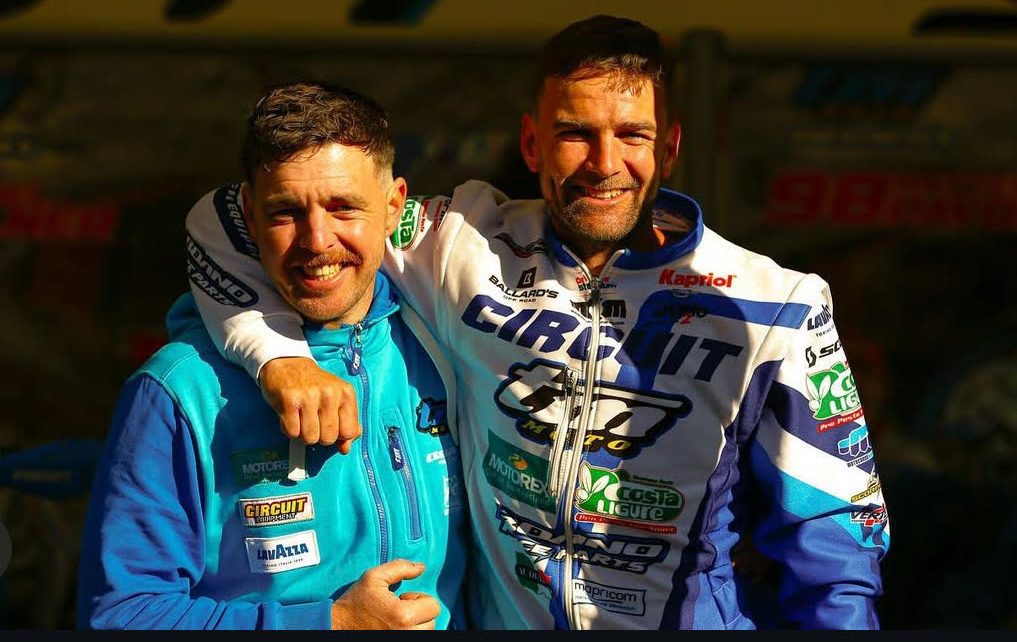
GateDrop: You also spent time in the Enduro GP scene with Daniel Milner — how was that experience different compared to Motocross?
Lillis: It was different. I felt like a bit of an outcast, for sure. I was the only Aussie. Me and Daniel were actually the only Aussies in the paddock. But we got along really good with all the UK guys, the Italians, the French. We get along with everybody. So it was fun, but it was also difficult because in the MXGP paddock, I kind of know, if I need a certain thing done, I can go to this guy. Whereas Enduro it was all new, so I didn’t really know everybody. I didn’t know who to trust, who to talk to and who to bounce off so that was difficult. But I enjoyed it a lot, it’s a lot of fun. You get to ride a lot more with the following of the riders and stuff on the bike so for that part, it was really cool. But for me, the professionalism, the glitz and the glamour, I kind of like that a little bit more.
GateDrop: What’s the toughest part of the job that fans or even riders don’t always see?
Lillis: Other than the actual travel and the time on the road, I think that’s probably what everybody would say. I think there’s only two or three Aussies in the paddock now. I think maybe only two right now that are in the paddock full time. So, you don’t really have that comfortable feeling. But the hardest part, I would say, is just dealing with the different personalities and this is the same in America. You have a place where people grow up in completely different areas, in different cultures, different traditions, different religions, different everything. And then you’re all kind of jammed into a semi, like a camion together.
And then you’ve got to just get along with everybody so that’s easily the hardest part. I think it’s sometimes overlooked as well. A good mechanic is someone that can kind of get along with everybody and kind of fit in whatever role they put him in. I think sometimes for some people it’s quite difficult
GateDrop: What made you decide to return to the GP paddock, and how did the opportunity to work with Janis Reisulis and Gavin Towers come about?
Lillis: So that all came about after Enduro, I spent two years in Italy. I felt like I’ve done my two years over here. I’ve dragged my wife and my son who was just born at the time, I’ve dragged them all over Italy following this. The VRT Yamaha team at the time was maybe only an hour and a half from my wife’s family. So, with the baby being closer to family was the big reason to go back. I got along really, really well with Pela and Mickaël Vrignon from VRT and the mechanics still there. It was kind of a natural fit for me, I actually really enjoyed my time there. Originally it was supposed to be KTM, I was supposed to be coming back to KTM. I accepted the deal on the Friday and then on the Monday Pela called me so I changed my plans to go to Yamaha.

GateDrop: You are at KTM now but it’s kinda funny, I think Harry Norton hired you and the next thing he’s gone. What was that like?
Lillis: It was actually quite funny. I’ve known Harry for quite a long time. Obviously being an Aussie in the paddock, he is someone I really looked up to coming over here, getting the two world championships with Tom and working at, in my opinion, the best team in the paddock.
So that was something that we always wanted to do, to work with him. Every year we’d talk about what’s your plans and you reckon there’s a spot for me. Then when he became the manager, he’s like, okay, bro, once we have a spot, you’re in.
At the end of last year, we had the interview with him and we could finally make a deal happen and I could finally come over. The team then had different plans and they wanted to move him, they thought he was better used in a different position. But I mean, I would have loved to have worked side by side with him. But we still speak quite regularly every time we’re in Austria. We chat and have dinner and things like that. So, we’re really good, close friends. He’s happier now in the position he is. He has more time with his family and stuff like that. He’s got a young family as well. With Stefan and Joel, it’s awesome. We have a great personal relationship. Everybody gets along really well – it’s a really good environment to be in.
GateDrop: KTM are known to really want to win – not only GP’s but also championships and they’re very successful. Working for them do you get this feeling that they’re only here to win?
Lillis: For sure, I think as soon as you put on this T-shirt with the Red Bull logo, you kind of have that. Maybe it’s not a pressure in terms of an external pressure, it’s more of an expectation. It’s funny because it’s a pressure where everybody enjoys and everybody likes because we know we have a package that can win. It’s not a guess. We know what wins, we know the bike can win, we know our engine’s good, we know our suspension’s good. We have so many guys behind the scenes working hard to win. So, to get those titles and to get those wins and podiums for the guys back in Austria and the guys in the shop, it’s not expected, but it’s like we know we have what we have. It’s weird, it’s not a pressure like a rider would feel. It’s more like having confidence.
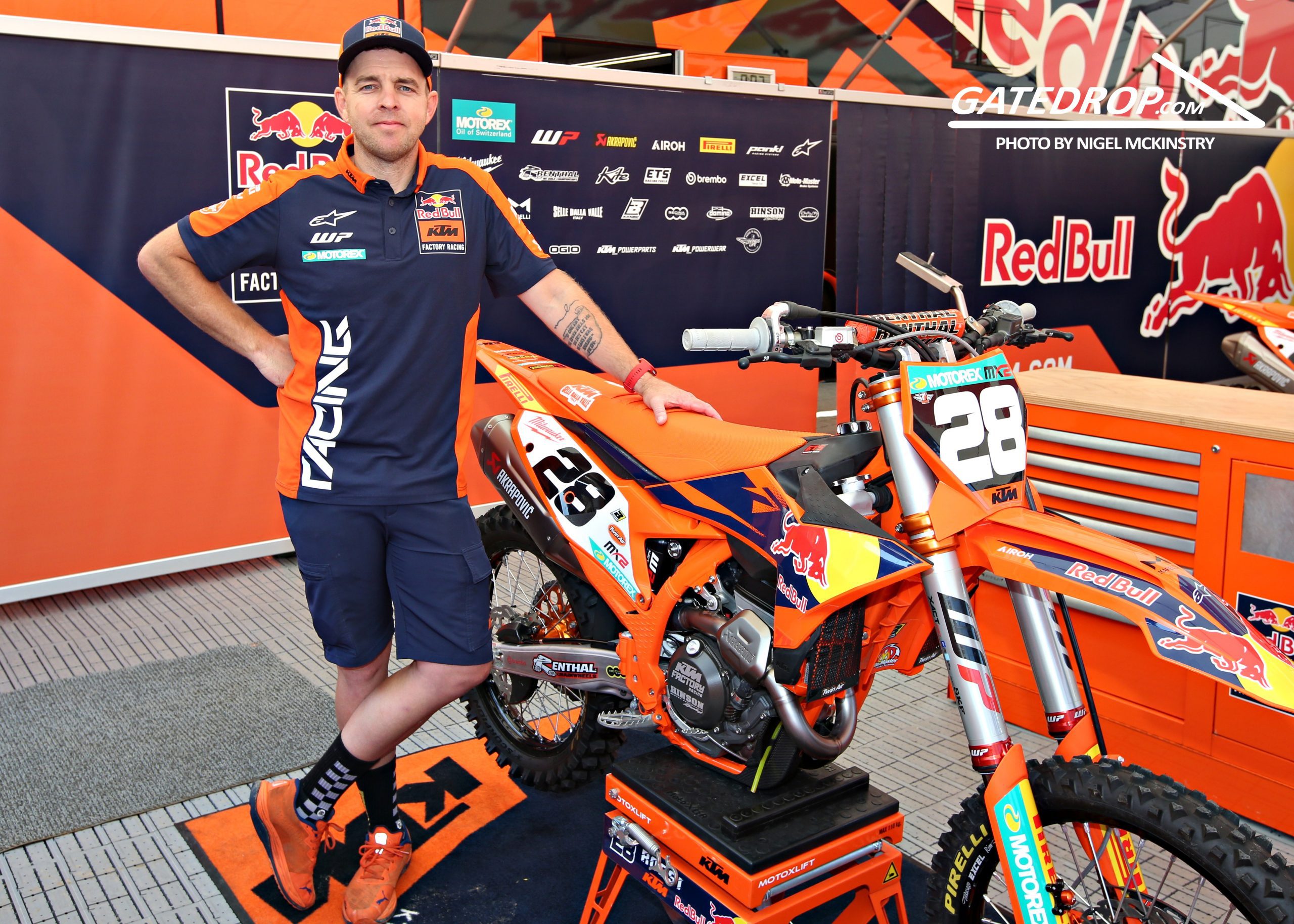
GateDrop: Marc-Antoine Rossi, he is so talented – people forget because of so many injuries the past couple of years. What is he like to work with and in the future what do you think he can do if he stays fit?
Lillis: The kid has so much talent. He’s actually one of those riders where you really enjoy watching ride. In practice, it can be minus 6 degrees, pissing rain, and you’re out there holding the pit board with an umbrella. But you like being out there because of the kid’s talent and speed. It’s really sad, and I feel horrible for him, especially at such a young age to have, I think in two years, he’s maybe done six races.
He’s had two surgeries on the knee, one surgery on the shoulder, just to try to get him back to what we know he can do. I don’t think there’s a person in the paddock that doesn’t believe if the stars align, he’s healthy and fit, he’s a podium guy and can win races, his speed is something that’s very special, and not a lot of guys can have.
GateDrop: Has Rossi got a particular demand on his bike, or have you ever worked with a rider that had a weird particularity?
Lillis: With Marc, it’s more… Honestly, his style is so… Like Joel (Smets) says, it’s nonchalant. He has an effortless style, and I almost think that’s a disadvantage for him because everything has come… I don’t want to say it comes easy because nothing comes easy in the sport, but his technical ability on the bike really does make it a lot easier for him to go at a lot higher speed.
So for him, the hardest part is to keep it under control because at any given moment, he can drag his handlebar on the upper ramp of a jump and just completely scrub to bigger than James Stewart could ever dream of. So, it’s to keep him on the straight and narrow, and like, okay, come on, let’s keep it wheels on the ground kind of thing. So I think that’s obviously… I think Joel will agree too. It’s probably the biggest stress with him and Marc is just keeping him on two wheels because at any moment, he can explode.
But being particular… The older guys like Metcalfe and Brayton, their controls are very particular. Justin has a very particular grip setup. He wants a half waffle sock rolled forward with the first square cut off the diamond. Daniel liked the full waffle grip with all the waffle cut outs, so it’s skinnier. Metcalfe was similar as well with his levers. They’re all very particular in the ergonomics of the bike. But then, yeah, it was never… Like there’s some guys that need a brand new set of stuff… Like Jeffrey, if he doesn’t have a brand-new rotor and brake pads and stuff like that, the bike just doesn’t last for the moto, he’s very heavy on the rear brake. Andrea is the same with the clutch whereas Marc, you can use maybe one set of brake pads in six months. It’s crazy that there’s some guys that are really, really hard on stuff. Like Janis, for example, is very physical on the bike. He’s very, very strong. He would bend handlebars without crashing just from impacts into things. There’s some guys that are very, very hard on the bike and then there’s other guys like Marc who are so easy that he could use one bike all year.
GateDrop: You work closely with Stefan Simpson, Valentina Ragni and the legend Joel Smets. What is it like working with them? There seems to be great vibes!
Lillis: I think for me personally, it’s been awesome because, I mean, Stefan has got a whole heap of experience, but maybe not so much in terms of just straight-up mechanic and racing kind of thing because he’s been in R&D. He’s worked many, many years at such a young age with Shaun like in the trenches.
He started from the bottom with Shaun and then they worked their way up. He’s worked in factory teams pretty much his whole life. So, for someone like Stefan who knows the systems, he knows the workings of KTM, and it’s the same with Joel and Valentina. They’re both… Everybody’s been involved in the company for so many years is they know everybody at such a personal level. It’s such an advantage. It’s just the cliché saying, you can’t pay for experience. Between the three of them, I think we have more experience in the paddock than anybody at all different positions, you know.
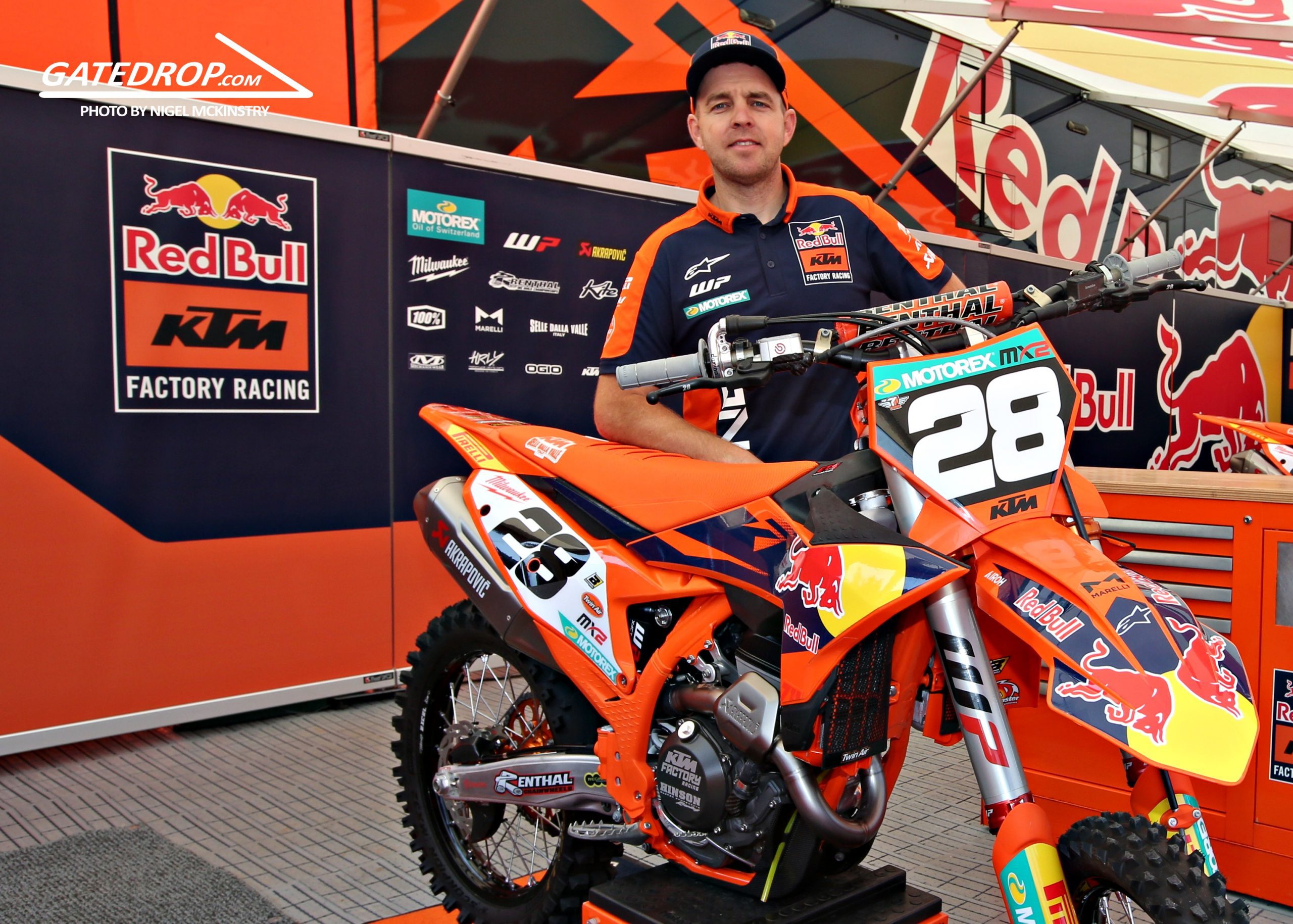
GateDrop: You’ve clearly built up a lot of experience across continents — do you have a long-term goal in the sport of what paddock you’d like to be in for the future?
Lillis: I think it goes with the sport. I mean, you want to think like… Honestly, maybe that’s one of the harder things is try to plan for the future. Obviously, every team can change in 12 months, you know. So nothing’s guaranteed, especially with the nature of the sport, the nature of the economy and stuff like that.
It’s quite stressful. But for me, I think I have found a home here at KTM. I’m very happy with everything. It’s kind of what I’ve been searching for since leaving America – that same structure that I had in America, the efficiency and stuff like that. So yeah, for me, I don’t see myself moving anywhere anytime soon as long as they’ll have me.
GateDrop: I believe you’ve got a French wife and you are a Dad, do you see your future here with them? Or perhaps in the future you’d like to take them to Australia?
Lillis: We thought about it. I met my wife in America in 2015. She was over there working as well with Pirelli so she’s involved in the sport. Her nephew and brothers grew up racing. Her nephew (Liam Bruneau) races in the EMX125 class so she’s been involved in the sport her whole life.
We both have very similar sort of upbringings in terms of just being involved. So, we both have a good understanding of how the sport works, the stresses and the complications that come along with this job. For me personally, for me to do the job that I want to do at the level I want to do it at, it’s either I have to work in Europe or America.
You know, there’s a great series in Australia. I did a great couple of years there in the COVID years with Brett Metcalfe and Kyle Webster in Australia with Honda and that was fun. It was fun to sort of go back home and do it. I could apply what I learned over the last 10 years in America and then see if I could do it in Australia and it was good.
Don’t get me wrong. The level is high and the professionalism is high. But for me, it’s just… I like being at the top of the top. It’s like anything. Even if you’re coaching high school football or high school rugby or under-14s rugby, you always think, man, it’d be cool to coach the A grade one day.
So for me, I’ve always wanted to work at the top of the sport. I want to win AMA championships and I want to win world championships. I want to win as much as anything. So for me, I still have that personal desire to win and especially at the top of the sport, if I can look back when I’m 60 years old and have a handful of world championships up my sleeve, I’d be a pretty happy man, you know?
GateDrop: Have you took your son to Australia so he can see where you’ve grown up etc?
Lillis: Oh yeah, usually at Christmas time. Two years ago, we got back and spent some time there. They love it. It’s just… Honestly, Australia makes it very difficult with the visas and stuff like that. It’s very expensive. It’s even hard to get the dog over there with quarantine and stuff. So yeah, they make it difficult to live. Then again, for me to do the sport at the level that I want to do it for, it’s Europe or America. I like the culture over here, I like learning languages, I like the food, I like the people. I enjoy Europe, I like it.
GateDrop: How many languages can you speak?
Lillis: Not many that are very good, that’s for sure but enough to get by. My French is not so bad and my Italian is pretty decent. I can understand quite a lot. French is obviously my preferred one, but man, it’s hard. Learning a language at 35 years old is difficult.
GateDrop: Is it hard to make a good living from being a mechanic and is it difficult to balance your work/passion with family life? You are always on the road…
Lillis: It’s for sure one of the hardest parts, especially when you’re counting like three or four pre-season races, the weekends off, they could end up being a Dutch Masters race that we’d do. Especially with the young guys, it’s good to just keep getting gate drops in and especially if they’ve been injured. I mean, it’s a lot of work but to be fair, like I’ve had it pretty easy the last few years. But I mean, if you’ve got a guy like Jeffrey for example, with Dave, if he isn’t racing a GP, he’s either in the UK or in Germany doing ADAC or a National event so it’s hard – it’s a lot of travel.
GateDrop: You are a mechanic at the moment, would you ever have an interest in becoming the engine guy, coordinator or even team manager of a team if there was an opportunity too?
Lillis: For sure, I think everybody wants to take the next step and I think that was the main reasons for me coming to KTM was to look for the future in terms of myself and my family, just going forward.
I mean, it takes a few years to learn the processes and the team. If the opportunity ever came further down the line in a couple years’ time to move into a different position, I would take it with both hands. I’ve done the suspension thing, I’ve built engines pretty much my whole life so I think being a specialist in one thing is great. But for me personally, I think moving into a coordinator role or management role in long term, say in five or six years’ time or however long it is, I think that would be the goal for me.
GateDrop: What advice would you give to someone wanting to follow your path and become a top-level mechanic in the sport?
Lillis: I think it’s not easy. I think you’ve got to accept the fact that it’s not going to be easy. There’s going to be times where, you are going to be sleeping on the floor, sleeping in your van kind of thing. Especially when you’re starting out, there’s not a lot of money involved.
You’re really in the trenches but there is light at the end of the tunnel. I think the biggest thing is you’ve just got to get your hands dirty. You’ve got to suck it up a little bit. It’s not going to be perfect, especially in the first few years, you know. And then honestly, coming from Australia, the biggest thing is, I think people don’t think they have the skills straight away. But at the end of the day, I don’t think you’re expected to have it when you’re starting out. You’ve got to start from the bottom, there are no shortcuts.
If you’re a good guy, you have good manners, you’re on time, you look after yourself, you’re not out on the piss partying and you’re sensible and you follow the step-by-step process of what it is to work on the bikes. It’s quite an easy transition to move up, there’s plenty of really good jobs available.
GateDrop: Is there a dream rider you’d love to work with in the future?
Lillis: I mean, I wouldn’t mind Jett and Hunter Lawrences bonus checks (laughs). That’d be nice but honestly, it doesn’t matter. I mean, every rider is different and unique. Every rider you can learn something from. I don’t think there’s a dream rider, working for my nephew (Liam Bruneau) in the future would be cool. If he could come through the pack and go step-by-step, he’s on a 125cc for next year. If he can keep progressing and get out. That’d just be a cool thing. But, I mean, I’ve worked with Brett Metcalfe who was one of my heroes. To get to work with one of my heroes was a dream come true.
I’ve got to work with top riders like Justin Brayton and even cool young talents like Gavin Towers, Janis Reisulis and Michael Mosiman. Just to have a little part of their careers is really good. Starting out with Mosiman at Husky, we were young. He was 16 years old and we went through the Loretta’s and the Spring Nationals. We did the whole amateur season and it was nice to sort of help him achieve his dreams. I think that is something that I really enjoy. But, no, I don’t think there’s a dream rider, I think other than the Lawrences for the bonus checks. I think that’d be the goal.

